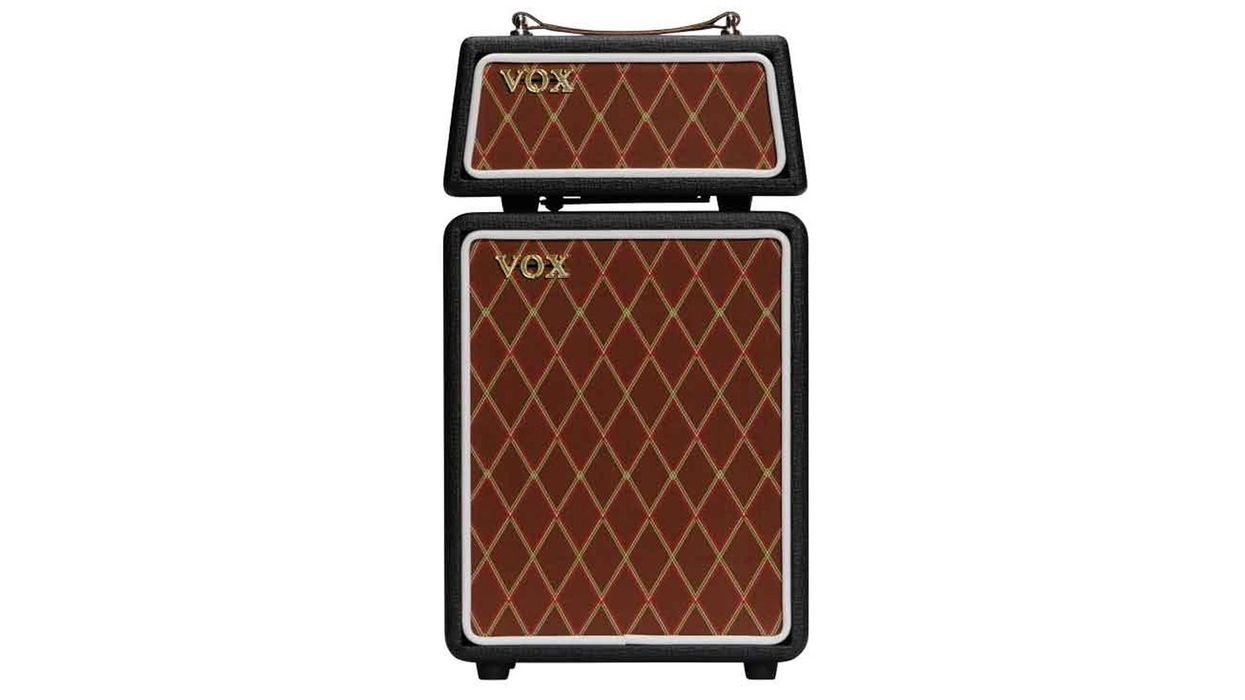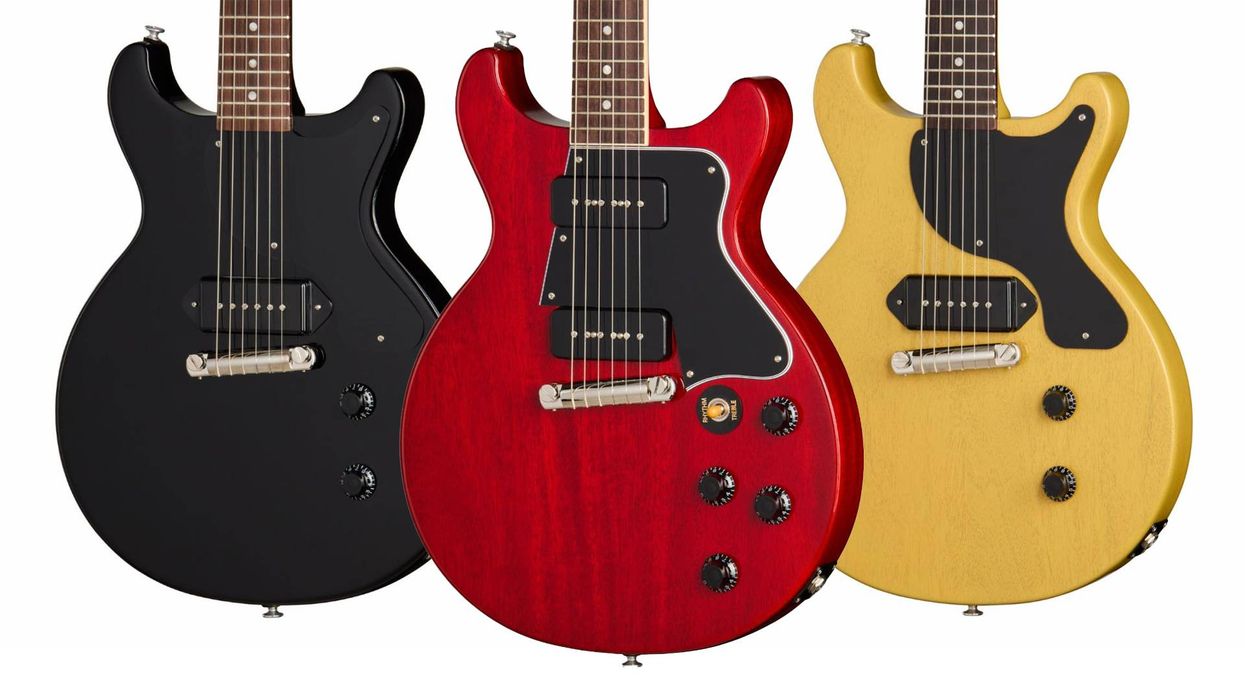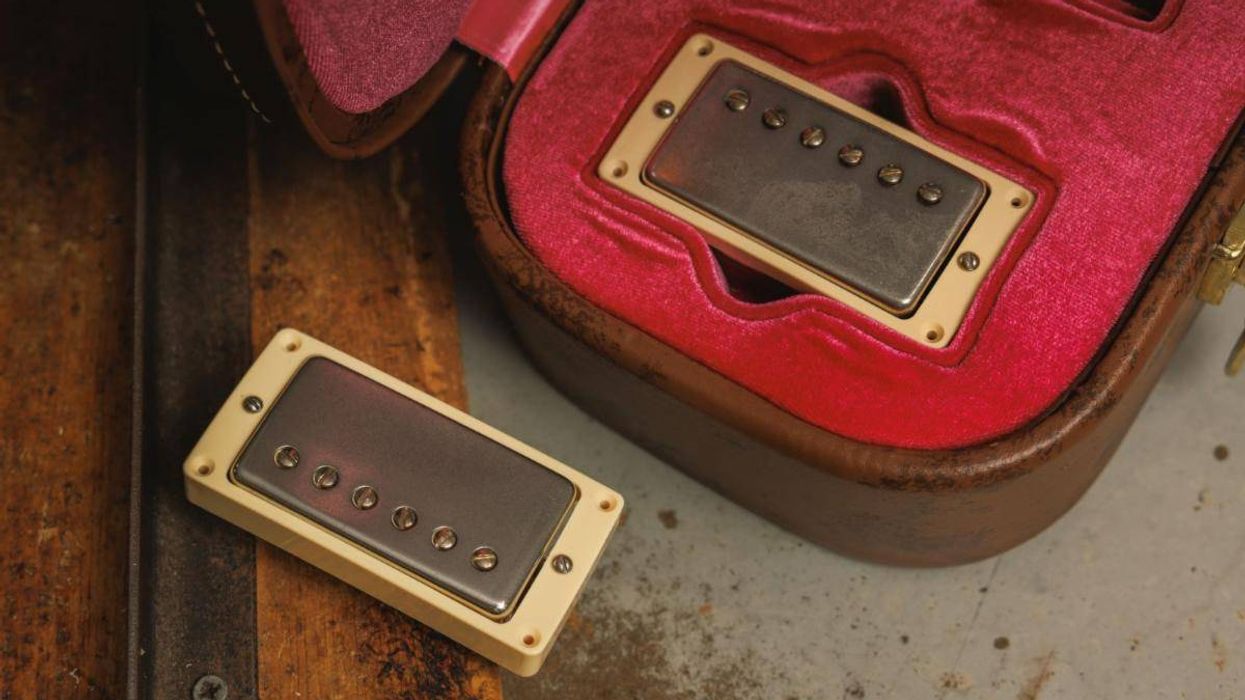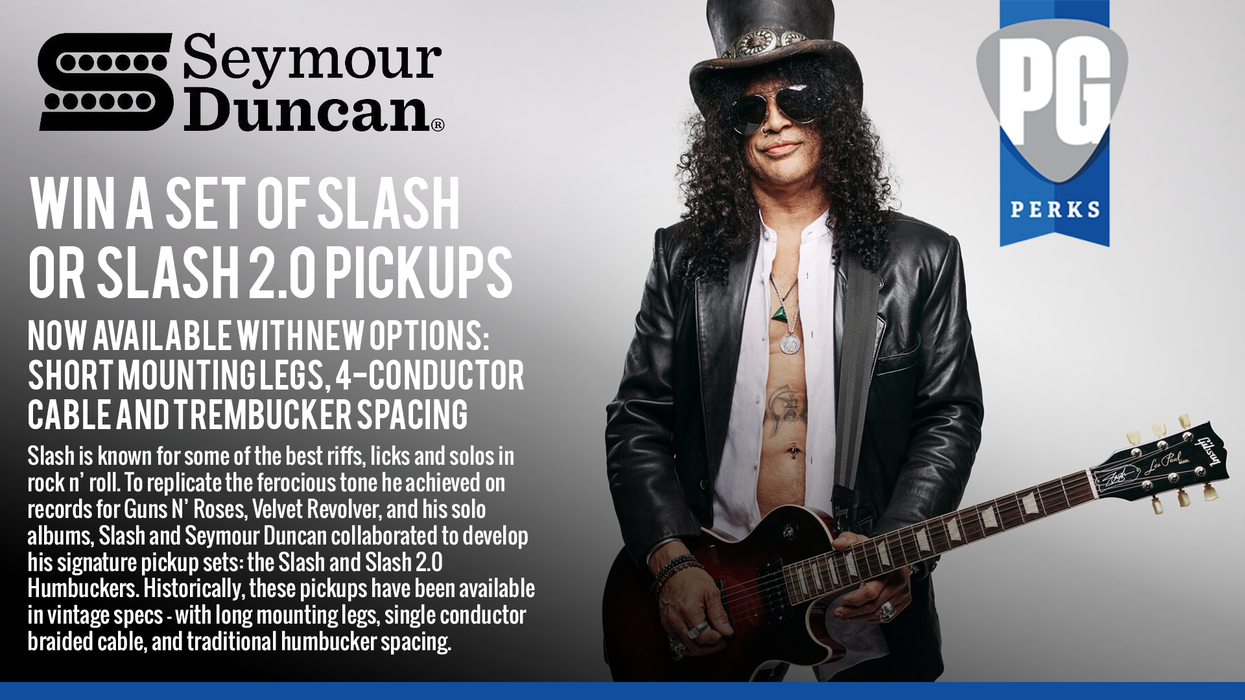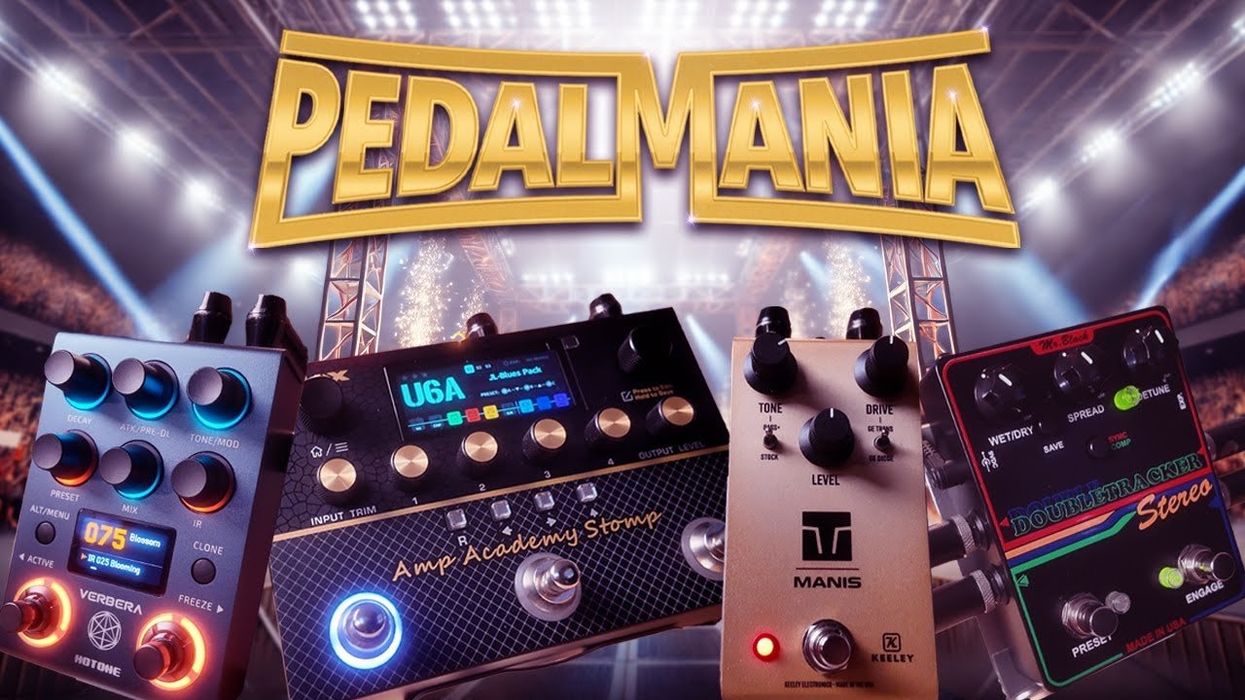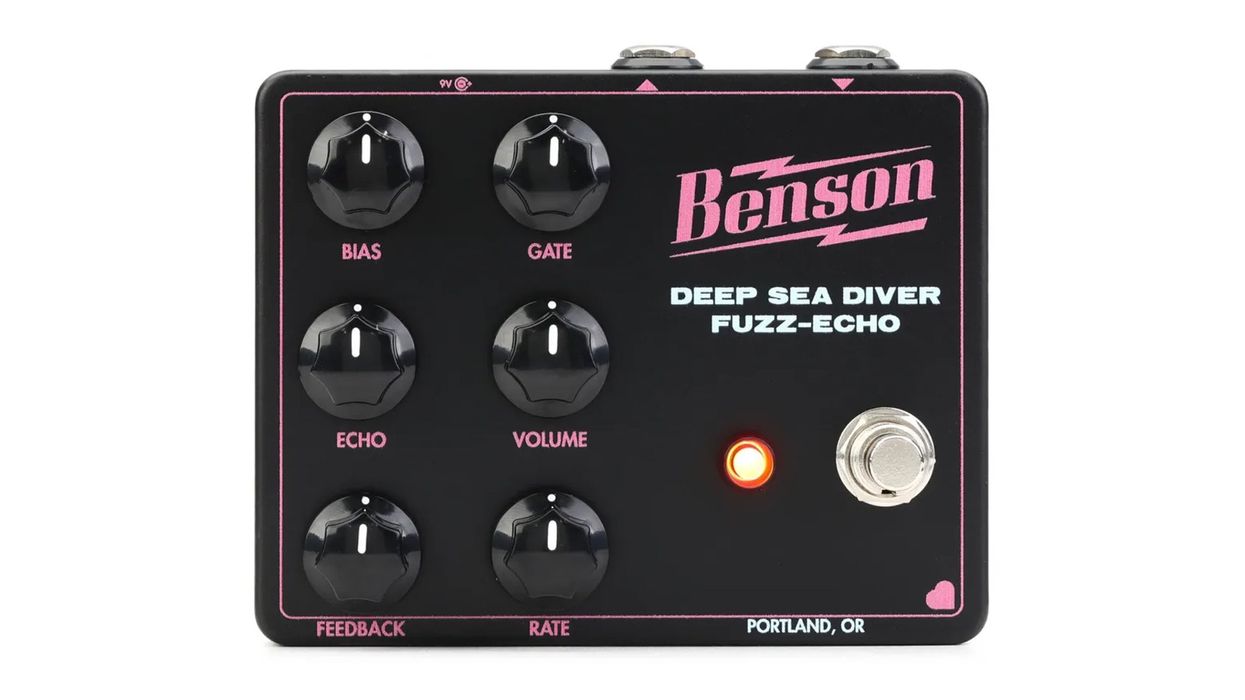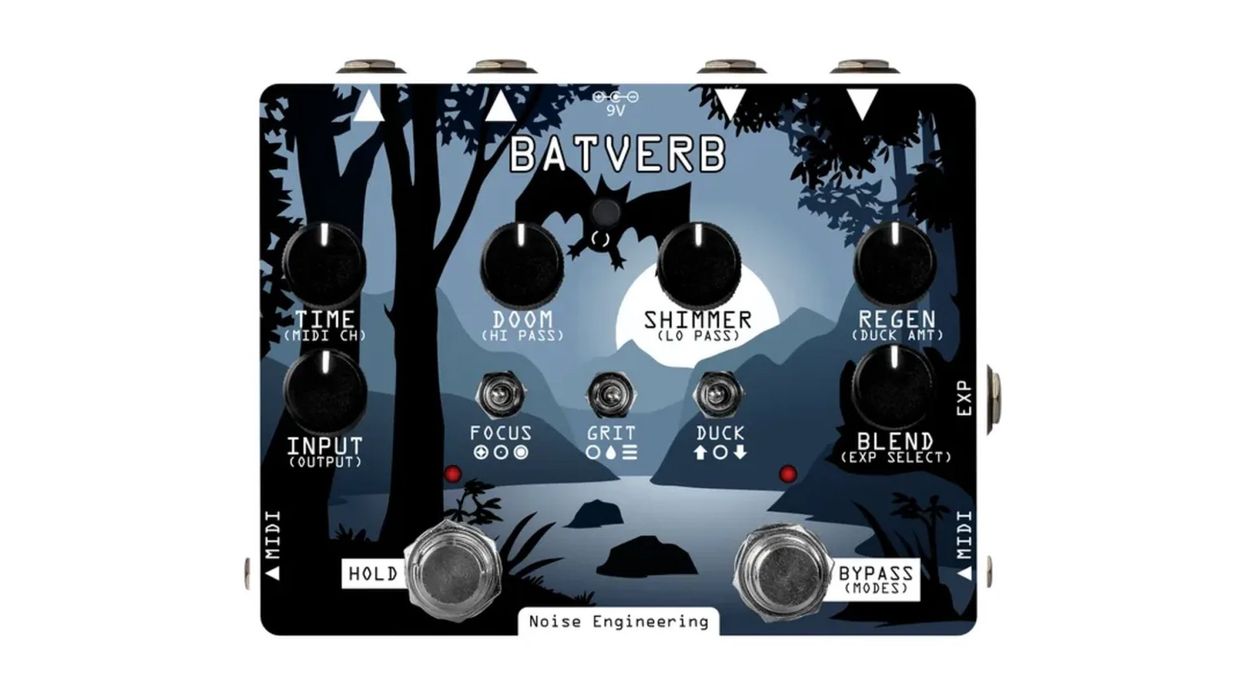Hot on the heels of their very cool vintage guitar reimaginations, the revitalized Harmony’s new tube combos are bound to stir up excitement for their tasty retro looks alone. But while the navy blue vinyl covering and white woven-fabric grille cloth with gold piping make the H650 reviewed here a head-turner, its power and clean-to-dirty tone range will garner double-takes, too.
The China-made 50-watt, dual-6L6 1x12 H650—the largest of the three new Harmony amps—occupies a power sweet spot that a lot of large-club performers in many playing styles prefer. But it’s not a deafeningly loud amp, and it comes with a built-in attenuator that makes home and apartment use possible, as well as a raft of tricks and quirks that will appeal to retro-minded players looking for a distinct voice.
The tremolo is warm, round, and bubbly.
Feature Film
The original Chicago-based Harmony company cranked out well-made, affordable acoustic and electric guitars for decades. At one time they were the largest guitar manufacturer in the nation, and possibly the world. As electrics became more and more a part of the company’s product mix, Harmony offered amplifiers, too, though these were generally made by third-party manufacturers. Some of these amps have become minor legends in their own right. The mid ’60s H415 model made by Sound Projects Co., for instance, is regarded by Trainwreck tube guru Ken Fischer as a gem among affordable vintage amps.
The H650 isn’t much like old Harmonys in terms of circuity or tube complement. A pair of 6L6GC power tubes delivers output that Harmony claims as 50-watts, although that’s on the high side for these tubes (most similar class A/B dual-6L6 amps generate 40 to 45 watts). Four 12AX7 tubes drive the preamp, effects, and phase-inverter stages.
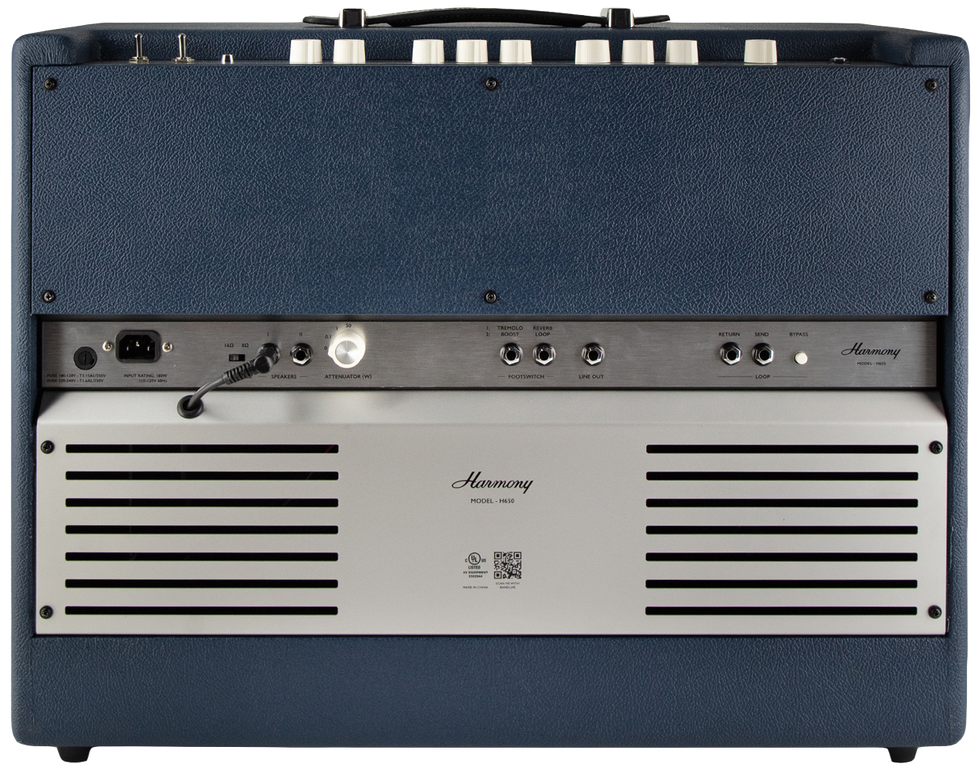
The cab is a semi-closed-back design, with a vented aluminum cover over the space between upper and lower back panels. Inside, a single Italy-made 12" Jensen Tornado Stealth 65 speaker converts all that energy back to moving air. The entire rig measures approximately 25.5" x 19.5" x 10.5" and weighs 49.8 pounds, which is still pretty hefty. But a wide, padded leather handle makes toting this substantial amp a lot more manageable.
Removing the upper back panel reveals a rugged printed circuit board, with through-hole, surface-mounted components. All potentiometers, switches, and tube sockets are mounted directly to the chassis itself, which should aid reliability over the long haul. Mounted on the grill side of the chassis, the tubes are tricky to reach, but it’s not impossible to access and replace them without pulling the whole chassis.
The top-mounted control panel offers a single channel with gain (which doubles as a push-pull control for boost), bass, middle, treble, reverb, tremolo depth and speed, presence, and master volume. The back panel is home to dual speaker jacks with a switch for 8- or 16-ohm output, and a rotary selector for the built-in attenuator, which offers 1 watt, 0.5 watt, and 0 watt output for silent recording via the line out. There are also two TRS footswitch jacks for a tremolo/boost and a reverb/effects loop, as well as a send, return, and bypass switch for the effects loop. Harmony thoughtfully includes both footswitches with the amp.
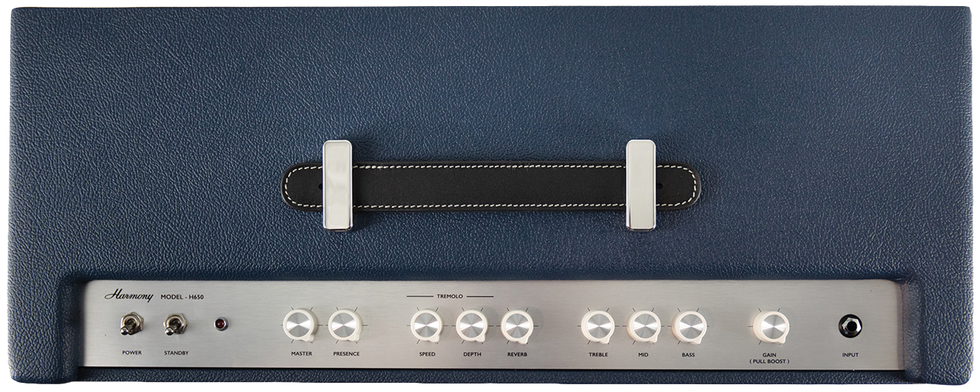
Blue Moves
Whether with humbuckers, single-coils, or P-90s, the H650 sounds distinctive, though at times a bit quirky. At lower to medium volumes, it ably produces clean to clean-ish tones reminiscent of a 6L6-based black- or silver-panel Fender platform: relatively mid-scooped, firm lows, and sparkling, glassy high-frequency tones. The Harmony’s greatest strengths are rooted in this foundation, but the spring reverb and tube tremolo help create lush retro soundscapes that are well suited to the fundamental voice. The tremolo is warm, round, and bubbly. The depth control’s taper increases drastically in the final 10 percent of its travel, but all the sounds are great. The H650’s reverb also sounds cool. It’s spacious, with a deliciously long decay but is never excessively splashy—even at maximum settings. The effects loop works effectively, and the external bypass switching is a bonus.
Things get wilder and more interesting when you crank the H650 to the point of overdrive. And whether you find these overdrive sounds fantastic or raunchy depends on your own tastes. With the gain past 1 o’clock and humbuckers or P-90s out front, the amp-generated distortion can sound a tad ratty and fizzy, which is very much in keeping with the cranked-up catalog-amp ethos that makes vintage Harmony amps appealing. Engaging the boost makes it even more so, as do most drive pedals. That said, there’s no end to the raw, garage-rock fun you can have with the gain maxed and boost engaged. Just don’t expect archetypal big-stack classic-rock lead tones.
The built-in attenuator is good at enabling ultra-hushed overdrive at bedroom practice volumes, but high-gain sounds can sound comparatively gnarly and compressed at 1 watt. It also seems that, given the effort of including such a feature, it would have been worth creating a 10-watt setting. Though the silent recording feature is a big plus for players that may be on the fence about justifying a 50-watt amp.
The Verdict
The H650 offers an interesting, if somewhat dichotomous, palette of sounds. On one hand, it’s capable of black-panel Fender-style clean tones that sound impressively refined if you stay in the amp’s sweet spot. On the other, you get hairy, raunchy overdrive in line with amps that constituted Harmony’s competition in the 1960s: Danelectro, Silvertone, Valco, and the like. The ethereal reverb and tremolo are a significant bonus. But whether the H650 works for you is probably down to how well you love the amp’s raunchier side.








